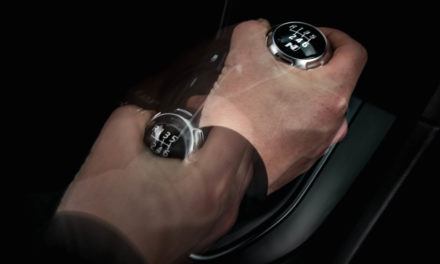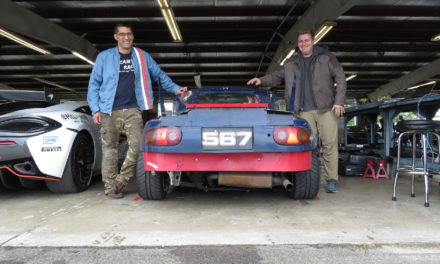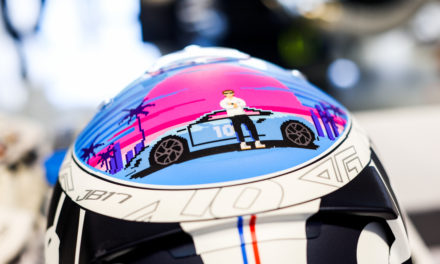“I want to race,” you say.
We hear you.
“But I don’t have a race car, a trailer, a helmet, a fire suit, or any demonstrated ability as a race car driver,” you say.
We still hear you. And we have a solution. Look out in the driveway: That’s your race car. You can probably borrow a helmet. All that other stuff? You don’t need it.
May we present autocross: the easiest, cheapest, most accessible form of racing there is. And you’re invited.
Solo

Flickr/Randy F
So what is autocross, and how can you and your car participate? (It can be confusing, but Solo is just another name for autocross.)
Imagine a big parking lot with a car-sized path laid out in a course, using more orange cones than you’ve ever seen. At the green flag, you’ll start your trip around the course until you come to the end. You’ll engage a timer at start and finish, and when you complete your lap, someone will hand you a slip with your time on it. Runs generally take about a minute, and you’ll get six to eight runs in a given day. Speeds usually top out around 55-60 mph, which means it can be done almost entirely in second gear for many cars.
Only one vehicle goes on the track at a time, maybe two if it’s a long course. All courses are different from the ones previously laid out in the past weeks or months, even those run at the same venue. There will be other cars (even some trucks, SUVs, and minivans), any approved and pre-inspected vehicle is welcome—but there is no racing fender-to-fender. Autocross is just about the safest form of motorsport there is; clipping a couple cones is a lot less intense than slamming into a wall.
Finding an event

Flickr/Justin C
So where to first? The Sports Car Club of America likely has autocrosses near you. Once on the SCCA website, click on “Find Events” and then “Autocross (Solo).” Type in your zip code, and click on “Find Your Fun,” and there they are—the next few autocross events near you. There are likely other autocrosses besides SCCA events in your area, held by car clubs, but attending an SCCA autocross is a good way to get started. You can probably register online. Fees are modest by racing standards, and events usually have loaner helmets.
Prepare to succeed

Alejandro Della Torre
The only truly necessary preparation is to remove any loose items from the car, and to make sure your tires are aired up at least to the recommended pressures. You should have a tire gauge; if you don’t they only cost a few bucks. A working set of seatbelts is also required. (If you read our more involved list of essentials for open track-day prep at a high-speed road course, it’s clear why autocross is so popular for novices.)
A great way to familiarize yourself with the course is to “walk” it when permitted by event staff. This procedure involves navigating the path through the cones on your own two feet, outside the car. The objective is to train the brain to expect which turn comes up next. Ask somebody if you need help—any other driver walking the track is almost certainly willing to offer some advice.
The whole point is not to beat the other cars in your class, but to beat yourself. Your fifth run should be way faster than your first. Note that in the course of driving Solo runs, cars will knock over cones. Each cone hit costs one second of added time. The competition will be divided into groups, meaning that groups not driving (on a rotating basis) will always be responsible for resetting cones. Watch what others do. Safety is paramount—wait until it’s safe to replace cones. Volunteers and more experienced participants will tell you when.
Build your skills

Flickr/Izrulazhar Jasman
You’ll see some very serious-looking cars with wide tires and loud engines, driven by some serious-looking people. Don’t be intimidated; they were where you are not all that long ago, and they give good advice. It is frowned upon to make fun of the newbies. Watch veterans’ line between the cones and try to emulate it. Remember: Faster every time. And if you aren’t, well, that’s okay, you’re still learning. If you do place in your class (that’s first, second, or third) you might get a small trophy or a ribbon. There is no purse, only parking-lot glory.
Speaking of learning: Here’s a solid tutorial—especially part one on how to “walk” the track—from three accomplished Mazda autocrossers. Soak up all you can, and then get out there to put their sage advice into practice!










